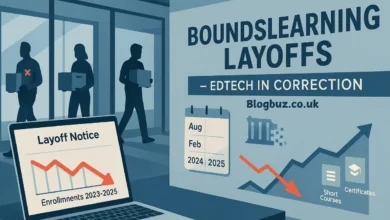Educational Toys: The Key to Combining Learning and Fun for Your Children

As any parent or educator knows, children are naturally inquisitive and learn most effectively when they are enjoying themselves. The concept of play as a form of learning is well established, with the dynamics of play offering a fertile ground for intellectual, social, and emotional development. An enriching way to foster this development is through educational toys, which are designed to stimulate learning through enjoyable activities.
The Role of Educational Toys in Learning
Educational toys are tools that combine learning with fun by integrating educational concepts into play. These toys range from simple puzzles to complex construction sets and high-tech electronic gadgets. They are crafted to enhance children’s mental agility, improve problem-solving skills, encourage creativity, and promote social interaction. By incorporating educational toys into playtime, children can develop foundational skills in a way that feels natural and enjoyable.
Early Childhood Development
The early years of a child’s life are critical for brain development. During this period, neural pathways are formed that lay the groundwork for future cognitive, motor, and emotional growth. Educational toys for younger children often focus on basic skill-building such as color recognition, shape sorting, and hand-eye coordination. These toys, while seemingly simple, are instrumental in aiding the developmental milestones which are pivotal in the early stages of childhood.
Exploring Complex Concepts
As children grow, the complexity of educational toys evolves to match their advancing intellect and curiosity. Manipulative toys that require assembly and follow patterns encourage logical thinking, while interactive electronic toys may introduce principles of science, technology, engineering, and mathematics (STEM). These toys allow children to explore complex ideas in a hands-on and engaging manner, making abstract concepts more accessible and understandable.
Nurturing Creativity and Imagination
Encouraging imaginative play is another dimension where educational toys excel. Toys such as building blocks, dress-up sets, and art supplies invite children to create, express themselves, and explore new worlds of their own making. This freedom to experiment fosters creative thinking and provides a safe environment for children to express their ideas and emotions.
Social Interaction and Cooperation
Many educational toys require or benefit from multiple participants, creating opportunities for children to learn about teamwork, sharing, and negotiation. Board games and cooperative puzzles, for example, help children understand the value of working together to achieve a common goal. These skills are transferable to real-life social situations, setting up children for successful interactions in school and beyond.
Choosing the Right Educational Toys
With the vast selection of educational toys available, choosing the right ones can be overwhelming. Parents and caregivers should consider toys that align with the child’s age, interests, and developmental stage. It’s essential to select toys that challenge children but are not so difficult that they become discouraging. A balance between familiar and new concepts will keep playtime both comfortable and stimulating.
Safety and Quality
Safety should always be a top priority when selecting any toy for a child. Educational toys should be constructed with non-toxic materials and designed with age-appropriate safety in mind. High-quality toys are not only safer but also tend to last longer, providing educational benefits over a more extended period.
Age-Appropriate Design
Toys are typically designed with specific age ranges in mind to match the developmental capabilities and interests of children at different stages. Infants and toddlers will require toys that are easy to grasp and visually stimulating, while older children may need more intricate designs that challenge their fine motor skills and strategic thinking.
Interactive Learning
Interactive educational toys that respond to a child’s actions or offer multi-sensory experiences can greatly enhance the learning process. These toys can guide children through a learning activity or offer multiple levels of difficulty to grow with the child. Interactivity is a powerful tool in maintaining engagement and interest in educational content.
Supporting Education at Home
Educational toys are not a substitute for active parenting or formal education, but rather a supplement that reinforces these foundations. Parents should engage with their children during playtime to guide their learning experiences and provide additional context to the educational content. Furthermore, parents can facilitate reflection on the activities, asking open-ended questions about what the child learned or discovered through play.
Measuring the Impact of Educational Toys
The effectiveness of educational toys can often be observed through a child’s ability to apply learned concepts outside of play. For instance, a child who plays with counting toys may begin to demonstrate a better understanding of numbers in daily life. Similarly, a child who frequently engages with construction sets may show improved spatial awareness and problem-solving skills.
Encouraging Lifelong Learning
Ultimately, the value of educational toys lies in their potential to instill a lifelong love of learning in children. By presenting educational concepts in a fun and accessible manner, these toys can help create positive associations with learning that persist throughout children’s lives. As a result, children are more likely to seek out new knowledge and experiences on their own, driven by the pleasure of discovery they found in their early encounters with educational toys.
Conclusion
In conclusion, educational toys serve as a bridge between play and learning, providing a foundation for children to discover and engage with the world around them. They harness the power of enjoyment to make educational experiences memorable and impactful. By thoughtfully integrating educational toys into children’s lives, parents and educators can enrich their development and provide them with tools to succeed in an increasingly complex world.




